COMBRETUM
Combretum
Loefl., Iyer Hispan, App. 308. 1708; Benth. & Hook., Gen. Pl. ed. 1: 688. 1865; Clarke in Hook. f., Fl. Brit. India 2: 450. 1879; Cooke, Fl. Pres. Bomb. 1: 514. 1958 (Reprinted ed.); Bailey, Stand. Cyclop. Hort. 1: 835. 1947; Fl. China @ eFloras.org 13: 316; Fl. Pak. @ eFloras.org p. 2.
Mostly climbing shrub, with long pendent or scandent branches, rarely undershrubs, non- climbing shrubs or trees. Leaves usually opposite, rarely whorled or alternate, simple, petiolate; leaf blade entire, elliptic or oblong-elliptic to broadly ovate; glabrous or pubescent, sometimes conspicuously scaly. Inflorescences terminal, axillary or extra-axillary, simple or branched spikes, racemes or panicles. Flowers bisexual or polygamodioecious (A species in which one plant has female and bisexual flowers and another has male and bisexual flowers), actinomorphic, 4-5-merous, epigynous; bracteoles minute. Calyx tube (hypanthium) cylindric, 4-5 angled, angles alternating with calyx lobes, sometimes with additional angles which run into calyx lobes, limb campanulate, 4-5-fid, teeth deltoid to almost subulate or filiform. Petals 4-5 (equal to calyx lobes), rarely wanting, inserted on calyx limb, usually inconspicuous, glabrous or hairy. Stamens 8-10 (twice as many as petals), biseriate, usually exserted; filaments filiform elongated; anthers dorsifixed or versatile. Disk intrastaminal, thin, at the base of or lining the calyx-tube, in the latter case ending in a hairy ring. Monocarpellary, ovary inferior, unilocular with 2-6 pendulous ovules; style subulate, adnate or not adnate to inside of calyx tube; stigma simple. Fruit dry, rarely fleshy, usually indehiscent, 4-5-angled, -ridged or –winged; sessile or stalked, 1-seeded.
281 species
Combretum indicum
Combretum indicum
(L.) De Filipps, Useful Pl. Dominica 277. 1998; C. indicum (L.) Jongkind, Fl. Gabon 35: 48. 1999; Quisqualis indica L., Sp. Pl. ed. 2. 1: 556. 1762; DC., Prodr. 3: 23. 1828; Clarke in Hook. f., Fl. Brit. India 2: 459. 1879; Cooke, Fl. Pres. Bomb. 1: 514. 1958 (Reprint ed.); Parker, For. Fl. Punj. ed. 1: 242. 1918 (Reprint 1973); Fl. China @ eFloras.org 13: 315; Fl. Pak. @ eFloras.org p. 5.
A deciduous liana with cylindrical branches, covered with soft, brown-golden pubescence, rarely sparsely glandular. Leaves mostly opposite, sometimes subopposite; petioles 7-15(-20) mm long, densely brown pilose/tomentose when young, persistent, often converted into curved spine; leaf blade 10-18 cm x 5-7.5(-9) cm, oblong-elliptic or elliptic, densely to slightly brown pilose or glabrous; base obtuse or slightly cordate; apex acuminate; margin entire; lateral veins in 6-9 pairs. Flowers arranged in axillary or terminal spikes, inflorescence lax; bracteate, bracts deciduous, lanceolate to ovate, acuminate, 6-10 mm x 1.5-2.5 mm, brown pilose. Flowers bisexual, actinomorphic, 5-merous, epigynous, fragrant, 7-9 cm long, 3.5-4.2 cm across, at first white, soon turning reddish. Calyx tube (hypanthium) 4.5-8 cm long, pubescent outside, expanded at the apex into 5 triangular 1-2 mm long acute or shortly acuminate teeth, teeth pubescent to partially glabrous on both surfaces; calyx tube constricted and deciduous above ovary. Petals 5, much exceeding the calyx lobes, opening white, later turning yellowish abaxially and reddish adaxially, obovate to oblanceolate, 18-24 mm x 8-15 mm, apex rounded to obtuse, pubescent on both surfaces. Stamens 10, arranged in 2 series, inserted inside the mouth of hypanthium, outer exserted from calyx tube; filaments 5-5.5 mm long; anthers 1 mm long, dorsifixed. Monocarpellary, ovary ca. 7-8 mm x 2 mm, 5-angled, unilocular with 2-4 pendulous ovules from the apex of loculus; style filiform, equal to the length of calyx tube, adnate to the calyx tube; stigma knob-shaped, slightly enlarged than style. Fruit red when young, greenish black or brown when ripe, fusiform, narrowly ovoid or oblong, sharply 5-ridged, 2.5-4 mm x 7-12 mm, pubescent or glabrous.
Common Names: Rangoon Creeper, Burma Creeper, Madhu Malti (Hindi)
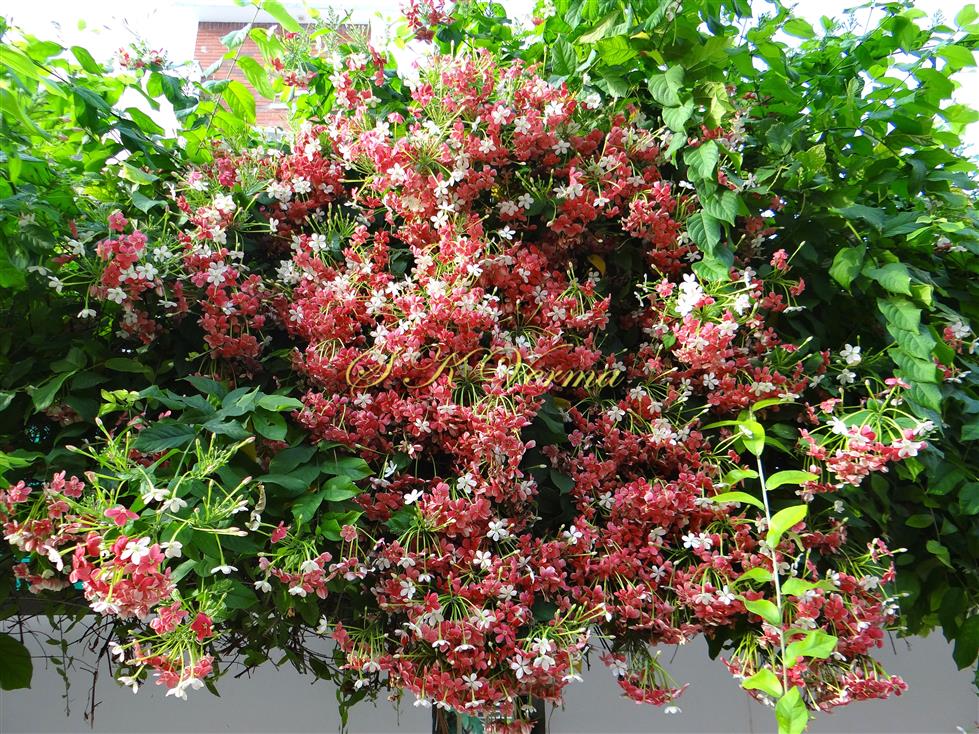

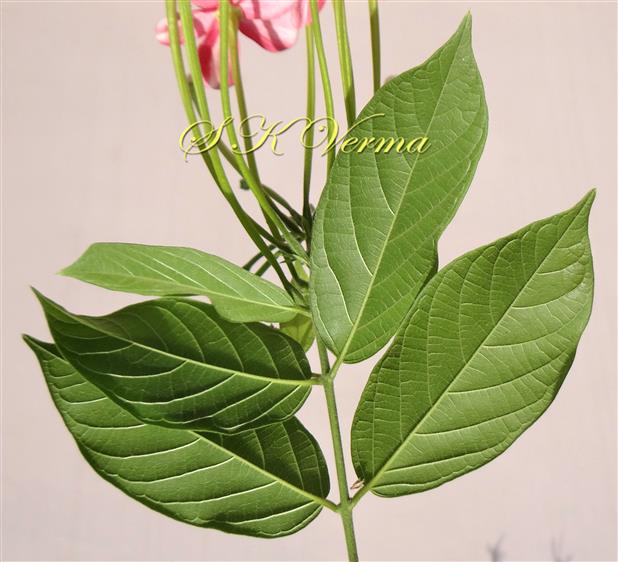
-DSC00040.jpg)
-DSC00038.jpg)
-DSC00023.jpg)
-DSC05592.jpg)
-Pendulous-DSC05617.jpg)
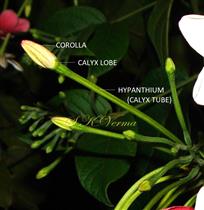
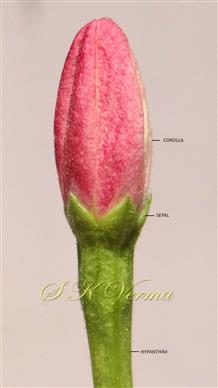
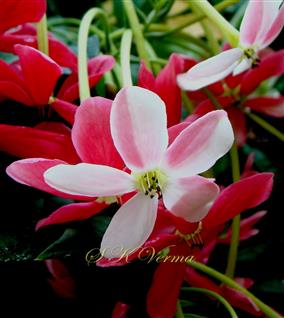
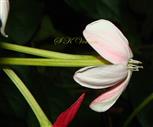
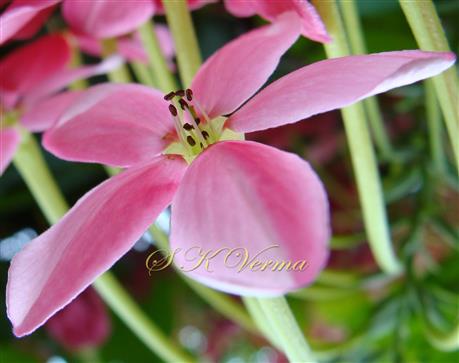
-5205.jpg)
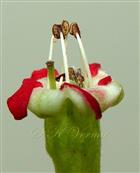
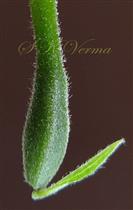
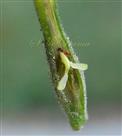
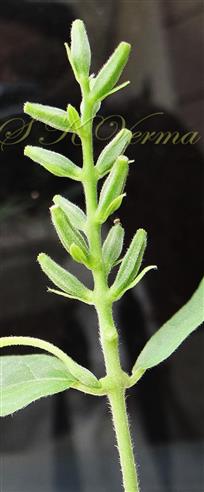
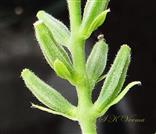




-DSC00040.jpg)
-DSC00038.jpg)
-DSC00023.jpg)
-DSC05592.jpg)
-Pendulous-DSC05617.jpg)





-5205.jpg)




